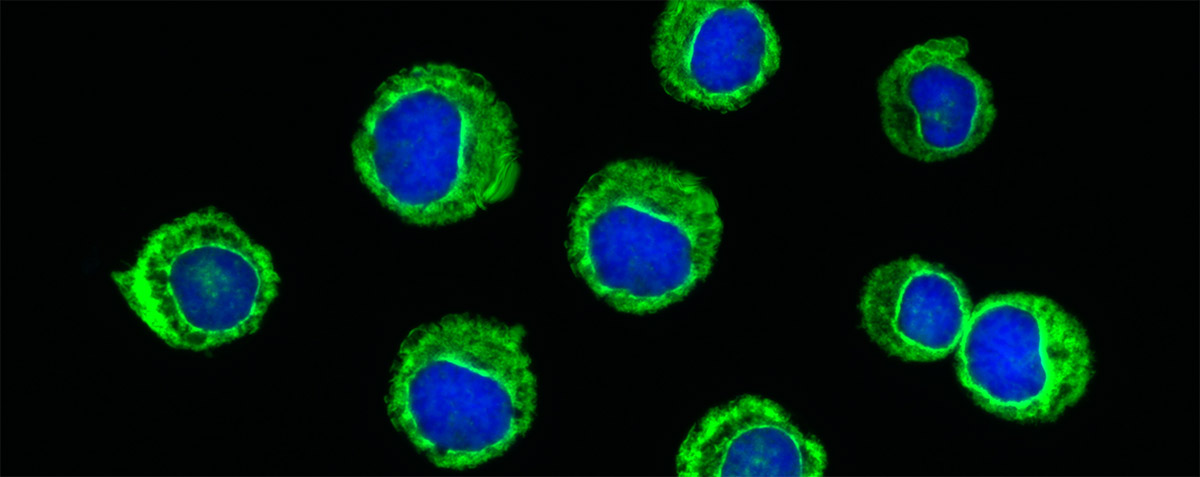Comparison of Different Fix/Permeabilization Buffers for use in Flow Cytometry Evaluations

Staining with intracellular antibodies has been a vital way to study the cytoplasmic antigens. In order to introduce antibodies to the interior of the cell there are many buffers that can be used to create openings in the cell’s membrane. This process is called permeabilization (perm). Without the cell membrane being permeabilized, intracellular markers cannot make it to the receptors on the inside of the cells. It is possible to stain cells with extracellular antibodies without using a buffer, but once intracellular antibodies are thrown into the mix, the cell membranes must be broken. Prior to permeabilization, the cells can be fixed in order to stabilize the cell membrane. Both the perm buffers and the fixation may decrease your fluorescence signal. Many companies have combined buffer sets for easy use when looking at intracellular antigens. It is important to test multiple buffer sets to determine the fluorescence signals are adequate on both the intracellular and extracellular antigens. A good place to start is on the manufacturer’s webpage of the intracellular antibody. You should be able to find the recommended fix/perm buffer set or by your target antigen.
There are different types of perm buffers that the researcher can choose from. One is a detergent based perm buffer, which typically requires the cells to be in constant contact with the detergent through washes and throughout the incubations. Another process to perm cells is to use ice crystals and alcohol. The alcohol slows the freezing so the cells do not burst upon exposure to -20⁰C, and also acts as a fixative. The ice crystals then disrupt the integrity of the cell membrane to cause permeabilization.
FCSL has tested five buffers forassessing the intracellular staining of FoxP3, a transcription factor expressed in T regulatory cells (T Regs). The method for allowing the antibody of interest to diffuse into the intracellular space is contingent on choosing a buffer to fix and permeabilize the cells. It is important that this buffer not decrease the fluorescence signal of the other extracellular antibodies used for identification of T Regs (i.e. CD45+CD3+CD4+FoxP3+).
Five buffer sets were compared (listed below) and by staining each condition with the same antibody clones.
Buffer 1-BD Pharmingen FoxP3 Buffer Set
Buffer 2- BD Pharmingen Transcription Factor Buffer Set
Buffer 3- Proprietary FCSL Intracellular Buffer Set
Buffer 4- Method published in Chow et al., 20051
Buffer 5- BioLegend FoxP3 Fix/Perm Buffer Set

Figure 1 – Cytograms illustrating the change in CD45+ staining. Both B) Buffer 3 and C) Buffer 4 show a decrease in this pan leukocyte marker as compared to A) Buffer 1. These 2 buffers would not be ideal for intracellular staining of FoxP3.

Figure 2 – Cytograms illustrating the staining pattern of the CD25+FoxP3+ T regulatory cells comparing A) Buffer 1, B) Buffer 2 and C) Buffer 5. Of these buffers, Buffer 1 has the most distinct T Reg population with Buffer 2 being a good substitute. Buffer 5 shows poor resolution of the T Reg population.
The manuscript by Law et al. 20092 also conducted a comparison of five different fixation and permeabilization buffer sets. Although this manuscript looked at 3 different fix and perm buffers, it did compare two of the same ones as the study conducted at FCSL. The authors also showed that the CD25 staining was lower in the Biolegend FoxP3 Fix/Perm Buffer Set compared to the BD Pharmingen FoxP3 Buffer Set. This result is in agreement with the findings of our study where the BD Pharmingen FoxP3 Buffer Set shows a very distinct CD25+FoxP3+ population compared to the Biolegend FoxP3 Fix/Perm Buffer Set.
Chow et al.2005 notes that major differences are seen in the scatter profile (SSC/FSC) of the cells and CD3 staining when the cells are exposed to high concentrations of alcohol in the fix and perm process.

Figure 3 – Chow et al.2005 cytograms illustrating the change in scatter profile (SSC/FSC) and CD3+ staining in response to alcohol concentration. A) 2% formaldehyde fixation with 100% methanol showing a loss of light scatter resolution B) no alcohol treatment C) 50% Methanol D) 50% Ethanol
In addition, tandem dyes can be even more susceptible to decrease signal when cells are permeabilized and fixed. This is an important tip to remember when looking at data and choosing the flourochrome/fixation method.
As the specific examples cited have shown, the intracellular antibody and surface antibody staining can be affected by the fix/perm buffers that are used. In addition, changes maybe noted in the forward and side scatter pattern. These two changes can dramatically impact the results and highlight the need to use consistent staining methods over the course of a particular study or project and especially necessary when evaluating inter- or intra-donor variation over time.
Are you looking for a laboratory to characterize and quantify Tregs in your samples? FCSL is a contract flow lab that provides high throughput and high capacity flow cytometry services, running multiple flow cytometers with up to 10 color antibody panels daily. We are proficient in processing a multitude of specimen types including whole blood, frozen PBMCs along with cell culture and tissue processing capabilities. Our flexibility in handling so many specimen types allow for the support of a wide range of flow cytometry assays including: immunophenotyping/lymphocyte subset analysis, receptor occupancy, functional assays and cell viability/apoptosis measurements. Our expert staff is always available to help guide you through these tests and we welcome clients to visit our facility. We encourage sponsor engagement throughout the process. Contact us for more information!
References
1Chow, Sue, et al. “Whole Blood Fixation and Permeabilization Protocol with Red Blood Cell Lysis for Flow Cytometry of Intracellular Phosphorylated Epitopes in Leukocyte Subpopulations.” Cytometry Part A, vol. 67A, no. 1, 2005, pp. 4–17., doi:10.1002/cyto.a.20167.
2Law, Jacqueline P., et al. “The Importance of Foxp3 Antibody and Fixation/Permeabilization Buffer Combinations in Identifying CD4+CD25+Foxp3+Regulatory T Cells.” Cytometry Part A, vol. 75A, no. 12, 2009, pp. 1040–1050., doi:10.1002/cyto.a.20815.

